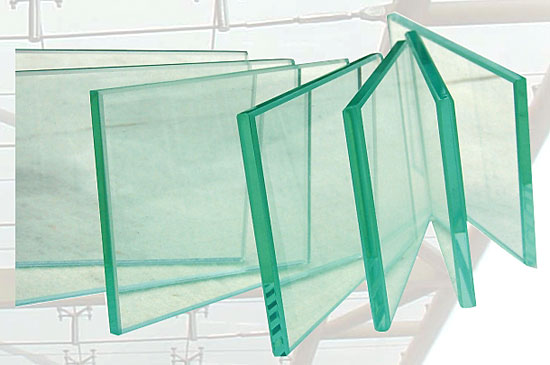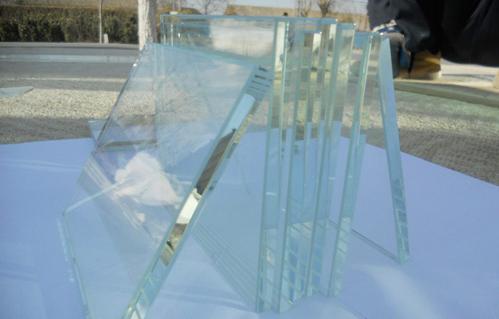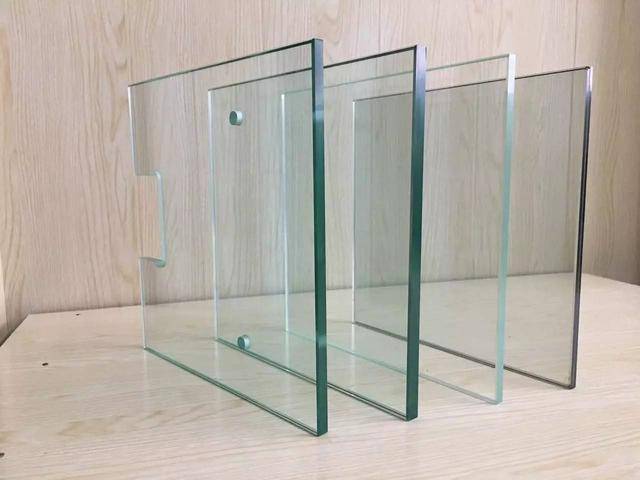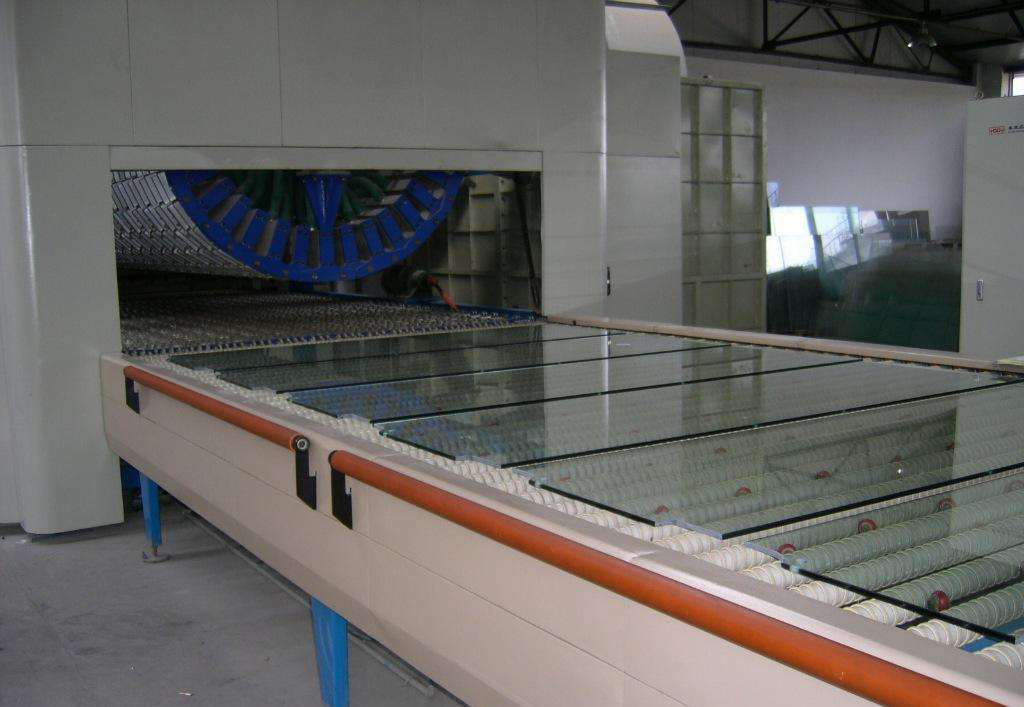In recent years, with the rapid improvement of modern science and technology, the old and traditional glass industry is moving towards a new direction of development, and a variety of glass products with unique functions have come out. These glasses can not only play a traditional light transmission effect, and have a variety of explosion-proof, safety, ultraviolet protection, heat insulation and other additional properties, but also can play an irreplaceable role in some special occasions. How are the original pieces of glass used for float glass produced? What processing steps should the original glass go through? Let us take a look at it.
一、How is float glass produced
The forming process of float glass production is completed in a tin tank with a protective gas (N2 and H2). Molten glass continuously flows into and floats on the relatively dense tin liquid surface from the pond kiln. Under the action of gravity and surface tension, the glass liquid spreads on the tin liquid surface, flattens the upper and lower surfaces, hardens and cools, and then is brought to the transition roll table. The roller of the roll table rotates and pulls the glass strip out of the tin tank into the annealing kiln. After annealing and cutting, the float glass product is obtained.
Compared with other forming methods, the advantages of float method are:
1, suitable for the manufacture of excellent flat glass with high efficiency, such as no wave reinforcement, uniform thickness, flat upper and lower surfaces, parallel to each other;
2. The scale of the production line is not limited by the forming method, and the energy consumption per unit product is low;
3. High utilization rate of finished products; It is easy to scientifically manage and realize mechanization and automation of the whole line, with high labor productivity;
4, continuous operation cycle can be up to several years, conducive to stable production;
二、The original glass to go through what processing steps
1, the selection of original pieces: First of all, glass processing must have original glass, ordinary glass processing plants do not produce original pieces, only large glass companies to produce original pieces, such as Xinyi Glass, South Glass Group and other large companies to produce. The thickness of the original glass is not the same, generally ordinary float glass 5-6mm glass, mainly used for external wall Windows, doors and other small area light transmission modeling; 9–10mm glass, can be used for indoor large area partition, railings and other decoration projects; More than 15mm glass, generally less on the market, often need to order, mainly used for a very large area of ground spring glass door exterior wall whole glass wall.
2, glass size cutting: the original glass itself is a fixed size, generally more than three meters long, more than two meters wide. Cutting can be said to be the first step in glass processing, and the staff will calculate how to cut the original piece according to the dimensions on the customer’s drawings. This algorithm must take into account the size consumed by the rear glass maro edge. Hence the term tolerance.
3, glass edge chamfering: just cut the glass will be scratched, the glass edge will be very sharp, customers will also require grinding edge, but grinding edge has grinding fog edge and bright edge, installed in the frame of grinding fog edge on the line, this can also reduce costs, grinding edge is those who are more beautiful glass customer requirements. After grinding the edge is chamfer, chamfer also has a dedicated chamfer machine, through the chamfer function accurately pour out the desired R Angle.
4, tempering: tempering is to heat the glass in the tempering furnace to a certain degree, and then cool it, and the hardness of the glass is enhanced after tempering. Customers will require glass tempering, so as to be safe. Tempered glass is also known as safety glass.
5, screen printing: some glass will go through this step, because the customer wants to print certain patterns on the glass, the company logo, etc. Screen printing also has high temperature silk and low temperature screen printing, high temperature screen printing will be carried out in the previous step of tempering. Screen printing room should be relatively clean. In this way, the ink will not be mixed with impurities. The effect of silk screen printing will be better.
6, cleaning inspection packaging: behind the glass to pass the inspector’s inspection can pass, the glass will be selected, some waste, some can be processed again. Good glass through the film machine film, and then with kraft paper packaging.
Address: NO.3,613Road,Nansha Industrial Estate, Danzao Town Nanhai District, Foshan City, Guangdong Province,China
Website: https://www.agsitech.com/
Tel: +86 757 8660 0666
Fax: +86 757 8660 0611
Mailbox: info@agsitech.com
Post time: Jul-21-2023





